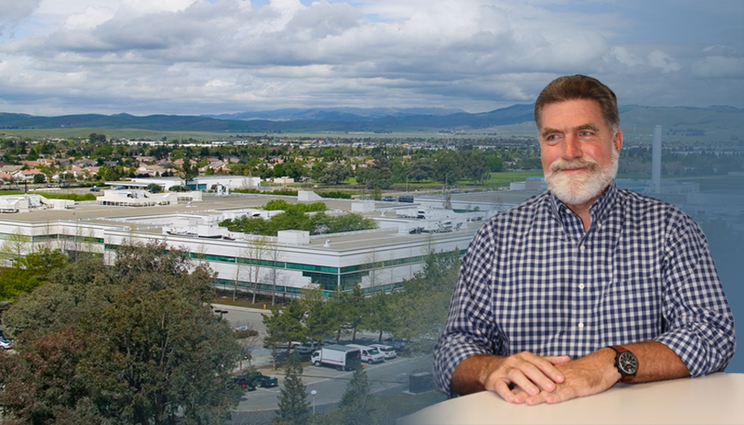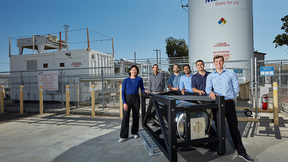Roberts takes reins of Laboratory think tank
 (Download Image)
Brad Roberts is the new director of the Center for Global Security Research at Lawrence Livermore. He hopes to expand the center’s influence and impact within and beyond the gates of the Laboratory. Photo by Steve Wampler/LLNL
(Download Image)
Brad Roberts is the new director of the Center for Global Security Research at Lawrence Livermore. He hopes to expand the center’s influence and impact within and beyond the gates of the Laboratory. Photo by Steve Wampler/LLNL
With backing from national leadership and Lab management, the new director of the Center for Global Security Research (CGSR) hopes to expand the center’s influence and impact within and beyond the gates of LLNL.
Brad Roberts, who started his job as the head of CGSR in late April, joined the Laboratory for two principal reasons.
"First, I am committed to helping to rebuild the bridge between the technical and policy worlds. And second, I was looking for an opportunity to help catalyze a national discussion of nuclear weapons and deterrence in the 21st century," he said.
Since the end of the Cold War, Roberts believes the national laboratories have been diminished in their ability to provide technologies that support the national interest.
"We hope to work in close collaboration with our colleagues at Los Alamos and Sandia national laboratories to bring a coherent technical message to the policy world," Roberts said.
After three months of working here, Roberts says, "The Lab is a fantastic environment in which to rethink national security issues and, of course, the high motivation of the people here is striking.
"The center has a broad agenda of long-standing research interests, but within that agenda, I want to renew our thinking about potential new forms of strategic conflict in the 21st century with a better understanding of red and blue, meaning adversary strategies and our U.S. strategies," he said.
Before joining the Laboratory, Roberts served for 15 months as a consulting professor at Stanford University and as a William Perry Fellow at Stanford’s Center for International Security and Cooperation.
During his time there, he authored a book entitled, "The Case for U.S. Nuclear Weapons in the 21st Century," which will be published this fall by Stanford University Press.
From 2009 to 2013, Roberts served in the Obama administration as the deputy assistant secretary of Defense for Nuclear and Missile Defense Policy.
In that capacity, he led two of the administration’s posture reviews – the Nuclear Posture Review and the Ballistic Missile Defense Review – and oversaw their implementation.
"One of the key commitments to emerge from these reviews at the presidential level was to strengthen extended deterrence and the assurance of our allies. This involved leading NATO’s review of its deterrence and defense posture and creating comparable mechanisms with our two allies in Northeast Asia, Japan and South Korea," he said.
Earlier in his career, Roberts worked for 12 years as a member of the research staff – with an emphasis on weapons of mass destruction issues – for the Alexandria, Virginia-based Institute for Defense Analyses.
Roberts holds three degrees with emphases in international relations — a bachelor’s of art degree from Stanford, a master’s of science degree from the London School of Economics and a Ph.D. from Erasmus University in Rotterdam, The Netherlands.
As the director of the CGSR, Roberts replaces Bruce Goodwin, who had headed the center for the past two years in addition to his current position as associate director at large for National Security Policy & Research.
Contact
 Stephen Wampler
Stephen Wampler
[email protected]
(925) 423-3107
Related Links
Global SecurityTags
Global SecurityFeatured Articles







